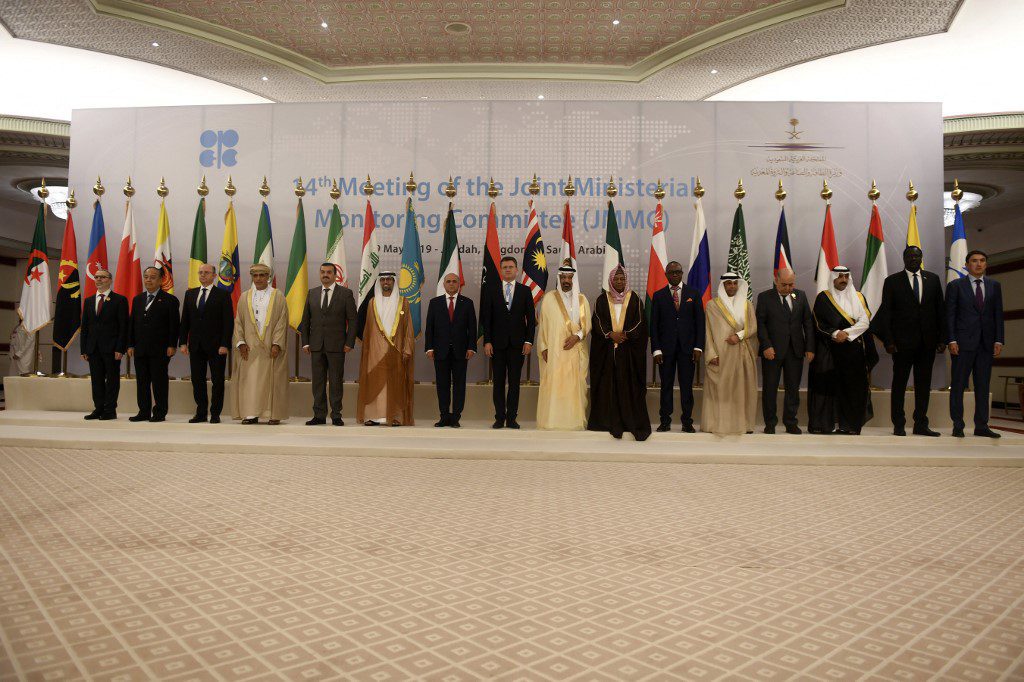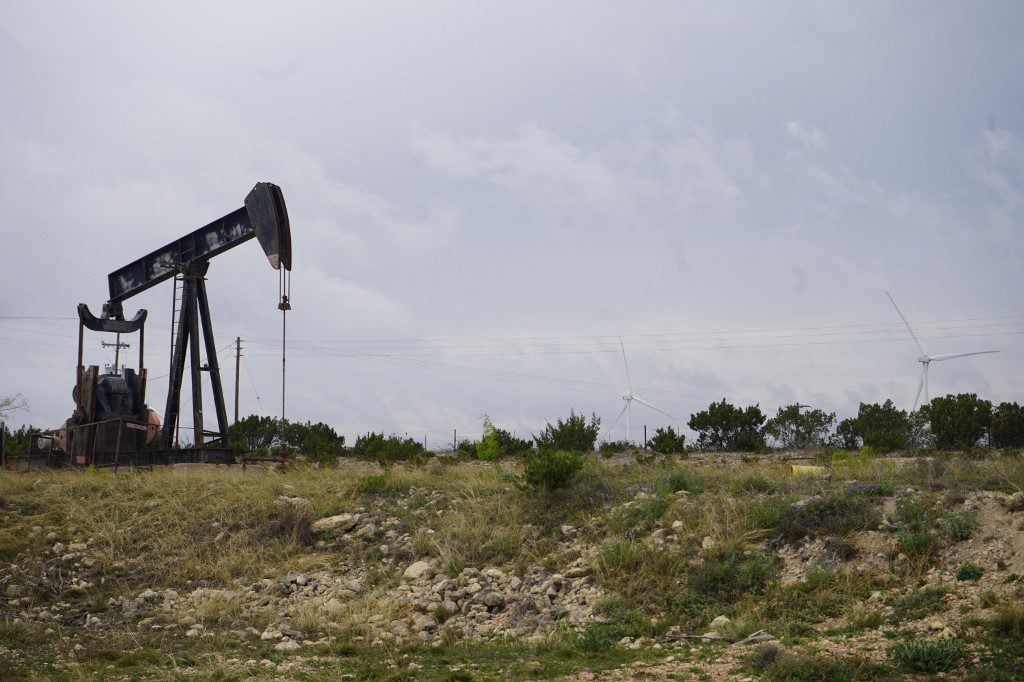
Ali Noureddeen
During the past year, the average price of a Brent Crude oil barrel hit as low as $41.84, a meagre annual average that has not been seen in global markets for more than 16 years. In April 2020, the price recorded historical declines to settle at $9.12, which is the rock-bottom decline in oil prices that year. Everyone remembers how US oil futures prices went negative in the same month for the first time in the United States History, which reflects the depth of the crisis resulting from the global decline in demand for hydrocarbons, to the extent that prompted American oil-producing companies to offer money to dispose of its future oil production.
These developments occurred last year after the Covid-19 outbreak, along with the decline in demand for fuel due to movement restrictions and the decline in production rates due to the total lockdown in most countries and the decreasing investment and consumption rates following the economic crisis caused by the pandemic.
The oil-exporting countries faced severe financial crises during the past year due to declining revenues from selling oil. These countries had schemed their annual budgets and planned their expenditures based on the expected revenues from selling oil with the old high prices. Therefore, the drop in the price led to a decrease in revenues to varying degrees, which led to large budget deficits. For this exact reason, the Arab Gulf states, for example, recorded deficits in their budgets amounting to more than $180 billion in the first half of 2020 alone. At the same time, Saudi Arabia received the lion’s share of these deficits with nearly 55%. The Gulf countries had to borrow about $100 billion from the financial markets to cover this deficit, while they covered the rest, i.e. $80 billion, from their reserves.
In short, in the first half of 2020, the oil-exporting countries experienced a severe crisis resulting from declining revenues. The industrial oil-importing countries suffered a parallel crisis due to market lockdown and demand and consumption decline. Pending the reopening of markets, regressing economic growth rates, and rising sovereign debts was the title of that period for all global economies, oil-importing and oil-exporting, developing and developed countries alike.
Economic Recovery and High Oil Prices
At the end of last year, global economies started to gradually recover after lifting the lockdown, and demand and consumption rates rose again. However, the production rates of basic materials of all kinds, including hydrocarbons, could not keep pace with this rise in demand in the same proportion due to the slow operating of investment projects designated for production since last year and supply chains inability to deal with the rising demand. Therefore, it was natural for the global economy to witness high inflation rates, especially compared to basic materials prices, especially oil. Thus, international oil prices began recording successive increases, exceeding $85 per Brent crude barrel during October, more than twice the average price last year.
At the same time, several factors began to pressure oil prices during the last period, pushing them to rise further. The approaching winter in Europe and North America was at the top of these factors, which is usually accompanied by additional demand for energy sources for heating. Simultaneously, the scarcity of coal, a traditional alternative to crude oil in global markets, continued, contributing to increased demand for oil derivatives. In Europe, gas prices rose due to the insane increase in demand compared to the limited supply, which raised the need for other fuels that could be an alternative to natural gas.
As these factors continue pressuring oil markets in the same manner, many expect this rise in fuel prices to continue during the remainder of this year, and the first half of next year, to a level that may exceed $90 per barrel during 2022. The World Bank expected this gradual rise in oil prices to continue until mid-2022, piling on the inflationary pressures globally.
Oil-exporting Countries: the Main Beneficiaries

All these developments represent an invaluable opportunity for the oil-exporting countries, which until recently were suffering from low oil prices and a decline in their income from exporting it. Due to this rise in oil prices, the World Bank expected that the Gulf countries, for example, would record a total growth rate of about 2.2%, in contrast to the contraction recorded last year, which exceeded 4.8%. Regarding these countries’ foreign currency reserves, which experienced some depletion to cover budget deficits, the World Bank expects their growth rates to rise by $300 to $350 billion during the next three years.
Saudi Arabia, in particular, benefited greatly from oil prices recovery, as figures from the General Authority for Statistics in the Kingdom showed a 6.8% GDP growth in the third quarter alone this year. This high growth rate is precisely due to the increase that the Kingdom achieved from its oil activities, which exceeded 9% during this period. But most significantly, the Kingdom recorded budget surpluses during this period, exceeding $1.79 billion, for the first time since 2019.
Simply put, the rise in oil prices pulled the major oil-exporting economies out of the stifling crisis they had suffered over the past year, which led to an increase in their sovereign debts and a contraction of their GDP. Not to mention that it caused countless problems, such as high unemployment rates and high private-sector debts. It is precisely this improvement that prompted Fitch Ratings to improve its outlook for the Saudi economy.
The Escalating Conflict of Interests between Exporting and Importing Countries
The OPEC currently represents the most prominent international conglomerate tasked with defending the interests of oil-exporting countries. The organisation now includes 13 countries, while the oil reserves of its member states are estimated at 79.4% of the world’s oil reserves. To defend the interests of the member states, the organisation coordinates their decisions and measures, precisely the oil production volume and the policies used in marketing, to control the oil supplies, and maintain revenues for member states. While KSA is the most prominent in this conglomerate, the OPEC+ alliance included another ten non-member countries, most notably Russia.
Currently, the oil-producing countries that are part of the OPEC+ are committed to a conservative plan to increase production, aiming to preserve their gains from the rise in global oil prices. In other words, these countries did not increase their output in proportion to the increase in demand for oil this year since they gain more from the high prices resulting from limited supply in exchange for increased demand. Thus, the insistence of these countries on the current conservative production plan has become one of the reasons for the global rise in fuel prices, in addition to all the reasons related to the high demand for oil. Russia and Saudi Arabia, the most influential countries within this coalition, were at the forefront of this plan’s advocates.

In contrast to this alliance, the United States led the effort to pressure OPEC+ to increase its oil production, along with a group of oil-importing industrial countries such as China, Japan, India, the United Kingdom and others. Practically speaking, these industrialised countries considered that the rise in imported fuel prices would curb economies’ recovery from the repercussions of the Covid-19 pandemic and harm their local industries, whose production costs depend primarily on the prices of energy sources. For this reason, these countries tried to pressure the OPEC+ alliance to increase production to reduce oil prices in markets, which certainly did not suit the interests of the OPEC+ countries.
Thus, the world entered the furnace of a war of interests between the major industrial oil-importing and oil-exporting countries. The last chapter of this conflict was the United States’ resort to using its strategic oil reserves and pumping them into markets in an attempt to twist the OPEC+ arm and reduce oil prices regardless of the organisation’s production rates. What’s remarkable is that the coordination of the United States with an entire camp of industrialised countries to take the same step, as South Korea, Japan, China, the United Kingdom and India joined the United States in this plan. Hence, the United States was developing a collective and bold confrontation for the first time in the face of the OPEC+ alliance.
In conclusion, oil prices in the coming period will be determined by the conflict of interests between the two sides, especially if the OPEC+ member states decide to respond to the US plan by stopping the increase in production permanently to prevent a new drop in oil prices. The oil-importing non-industrialised developing countries will be most affected by these events. These countries will bear the increase in fuel prices and the resulting increase in their trade balance deficit. However, through their production sectors, they will not benefit from the recovery of global markets and the rise in consumption.


